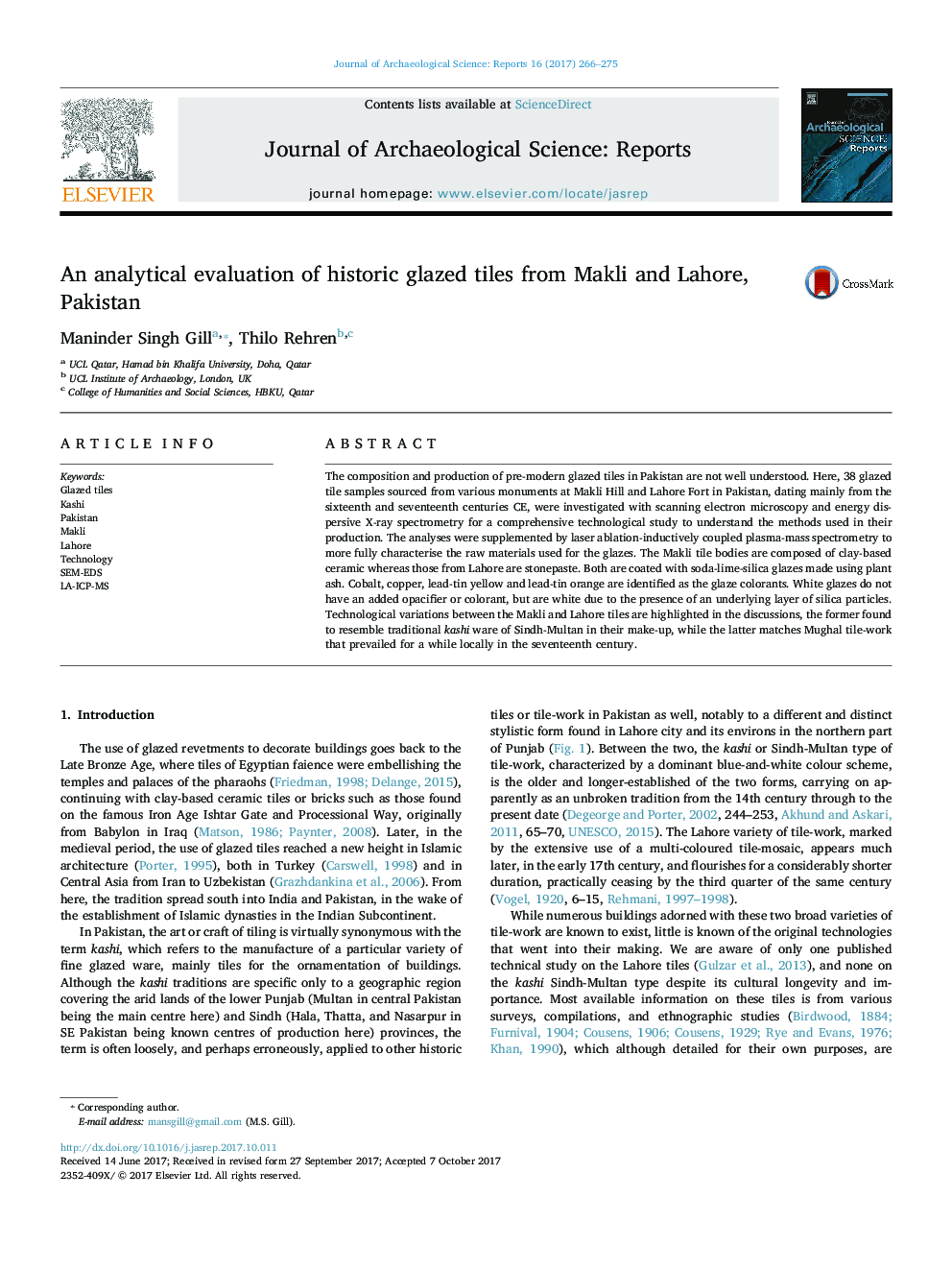| کد مقاله | کد نشریه | سال انتشار | مقاله انگلیسی | نسخه تمام متن |
|---|---|---|---|---|
| 5112170 | 1483927 | 2017 | 10 صفحه PDF | دانلود رایگان |
عنوان انگلیسی مقاله ISI
An analytical evaluation of historic glazed tiles from Makli and Lahore, Pakistan
دانلود مقاله + سفارش ترجمه
دانلود مقاله ISI انگلیسی
رایگان برای ایرانیان
کلمات کلیدی
موضوعات مرتبط
علوم انسانی و اجتماعی
علوم انسانی و هنر
تاریخ
پیش نمایش صفحه اول مقاله

چکیده انگلیسی
The composition and production of pre-modern glazed tiles in Pakistan are not well understood. Here, 38 glazed tile samples sourced from various monuments at Makli Hill and Lahore Fort in Pakistan, dating mainly from the sixteenth and seventeenth centuries CE, were investigated with scanning electron microscopy and energy dispersive X-ray spectrometry for a comprehensive technological study to understand the methods used in their production. The analyses were supplemented by laser ablation-inductively coupled plasma-mass spectrometry to more fully characterise the raw materials used for the glazes. The Makli tile bodies are composed of clay-based ceramic whereas those from Lahore are stonepaste. Both are coated with soda-lime-silica glazes made using plant ash. Cobalt, copper, leadâtin yellow and leadâtin orange are identified as the glaze colorants. White glazes do not have an added opacifier or colorant, but are white due to the presence of an underlying layer of silica particles. Technological variations between the Makli and Lahore tiles are highlighted in the discussions, the former found to resemble traditional kashi ware of Sindh-Multan in their make-up, while the latter matches Mughal tile-work that prevailed for a while locally in the seventeenth century.
ناشر
Database: Elsevier - ScienceDirect (ساینس دایرکت)
Journal: Journal of Archaeological Science: Reports - Volume 16, December 2017, Pages 266-275
Journal: Journal of Archaeological Science: Reports - Volume 16, December 2017, Pages 266-275
نویسندگان
Maninder Singh Gill, Thilo Rehren,